'Start with a clean slate:' Nordonia seeks all-new schools as crowded buildings age out
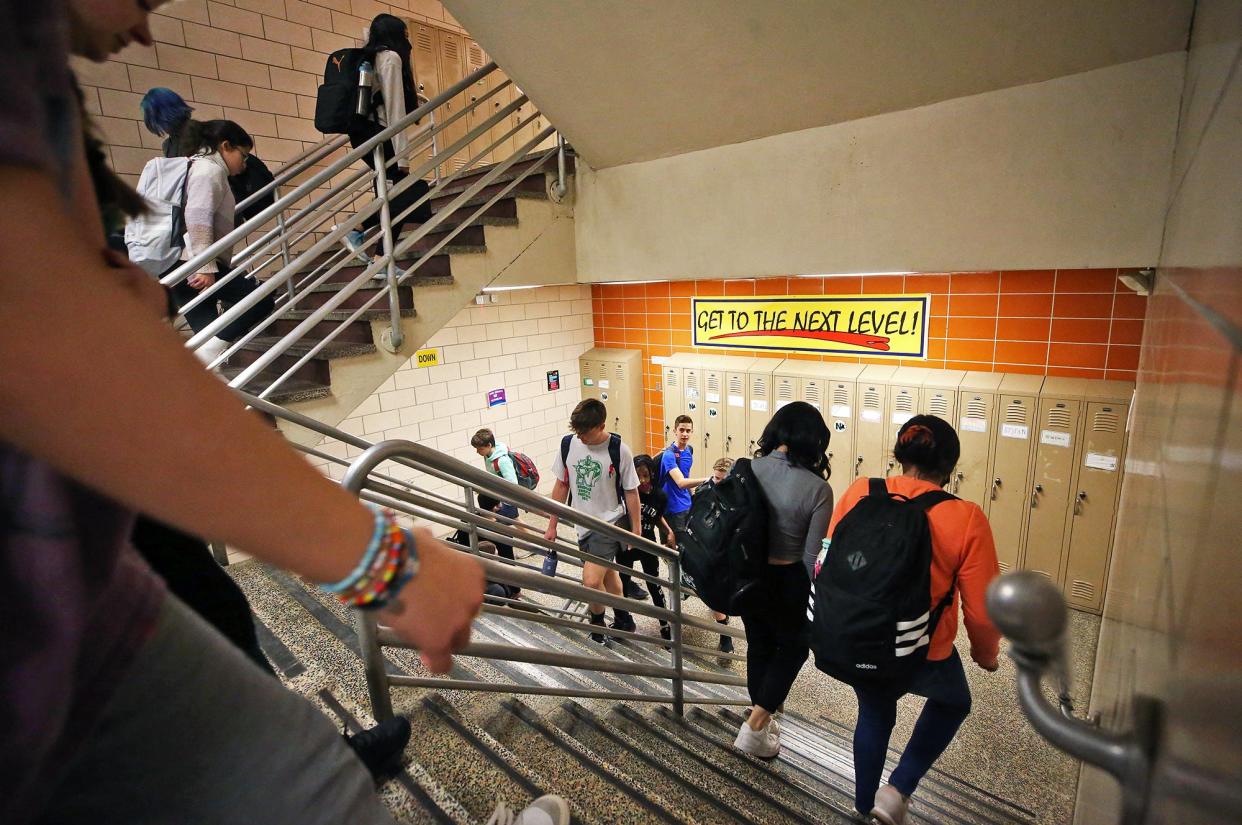
If your school building is approaching the century mark or is years beyond even the half-century mark, can it continue to meet the needs of modern-day education?
That's an issue the Nordonia Hills City School District is confronting as it draws up plans to accommodate growth and eliminate crowding and outdated facilities designs.
A steering committee is proposing to wipe the slate clean, replacing all of the district's buildings and regrouping some of the grade levels.
Officials with the district, along with community and business members, have been collaborating on the master facilities plan, which was presented to the school board Monday. The board must sign off before the proposal is enacted.
The plan calls for consolidating the six current buildings into three new ones: a new kindergarten through fourth-grade school, a new building for the district's fifth- through eighth-grade students, and a new high school building for ninth- through 12th-graders.
Currently, the Nordonia Hills City Schools have three schools for kindergarten through fourth grade, one school for fifth and sixth grade, Nordonia Middle School for the seventh- and eighth- graders, and Nordonia High School for the district's ninth- through 12th-graders.
Growing pains at the middle school
Nordonia Middle School was constructed in 1928 as the Nordonia Hills City School's high school, and has served the district and its younger residents for more than 90 years. It is the oldest school building and the second oldest building in the district in use. Only the school board offices, built in 1916, are older. The administrative building is attached to Northfield Elementary School, which was built in 1963.
Arguably more than any of the other district buildings, the middle school presents the most pressing case for new facilities.
Principal Bryan Seward quipped that the maintenance staff may be to blame for the school's longevity.
"When you first walk in here, it looks great because the custodians do such a good job," Seward said. "But when you look closer, you can see the problems. If it weren't for the custodians, we'd have a new building by now."
Other school projects: Summit Racing to raze Dunbar Elementary, plus ballfield and playground
Beginning of the process: Nordonia Hills community turns out to begin school facilities planning
One major issue at the building, which switched to serving seventh- and eighth-graders after the high school was completed in 1961, is its size, Seward said. Students eat lunch in three shifts, and the cafeteria is still crowded. The small classroom spaces makes it tough to have large numbers of students; this has posed challenges to social distancing during the pandemic.
Toni Donze, a seventh-grade social studies teacher, uses a room that was once a computer lab.
"We do the best we can," she said of the small classroom space. A big challenge, Donze added, was trying to space out desks during the COVID-19 pandemic. To make that work, the desks had to be rotated away from the smart board and return to using the projector.
Working together: Stow city, schools consider collaboration to build athletic fieldhouse near high school
In addition to space issues, Donze sad she would like to see "access to the outside world." The classroom has no windows.
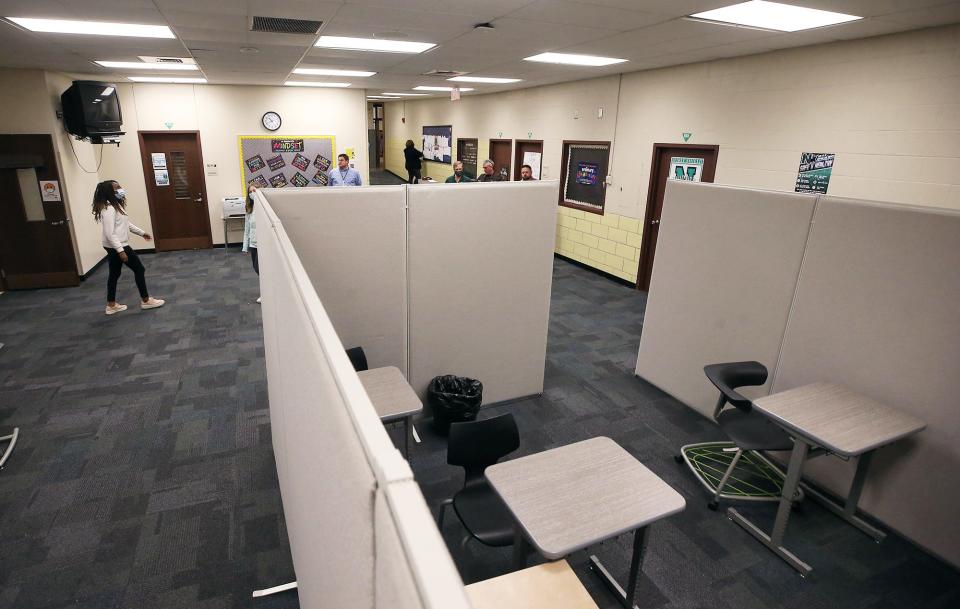
The school added a new gym shortly after the district passed a bond issue in 2001. The second gym served as a makeshift cafeteria to allow students to spread out during the height of the pandemic. But the school, which has nearly 600 students, can only seat 600 people in either gym, Seward said. This makes it a challenge to find room for families who want to come see their youngsters play sports.
"We don't have a single space where we can have all of our students together," Seward said.
Future for older school: Recommendation expected on former Hudson Middle School in late January
There's no storage space, either, Seward said. Larger items tend to be stashed away in quieter corridors.
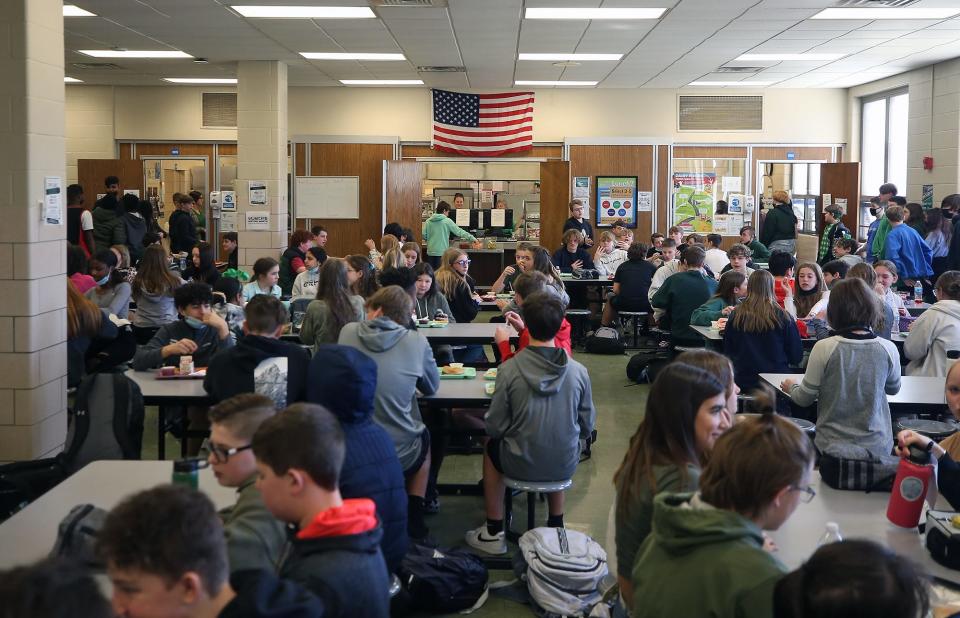
The cafeteria, Seward said, has been another problem spot — especially in the past couple of years, when all students have been able to eat a school lunch for free because of temporary federal funding. Even with three different lunch periods, the cafeteria is cramped, and the staff has trouble keeping up with the small kitchen space.
As well as space issues, Seward said, is that the building "has eight different levels with classrooms," While the building has an elevator, the layout can still pose challenges for students and staff with physical limitations.
The narrow roads, the school's proximity to a business and parking also create challenges for those coming to the middle school.
The older building also faces upkeep costs. On Monday, the school board approved a $300,000 contract for repairs to the middle school's roof above the gym area.
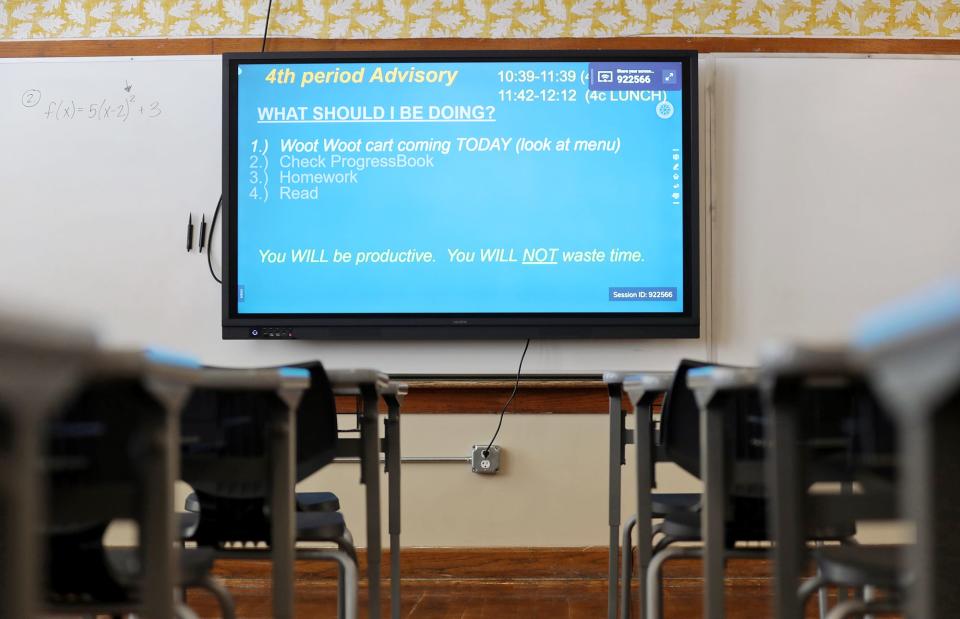
The case for restarting from scratch
The district's oldest building is not the only one with issues. Scott Leopold of Cooperative Strategies, who gave the presentation on the steering committee's final proposal, said that typically architects operated by a two-thirds, or 66% rule. If the cost of renovating an existing structure is more than two-thirds of the cost of building a new facility, then it is generally a good idea to construct new. This is the case, Leopold said, of all of the school's current buildings.
"We can justify starting with a clean slate," Leopold said. "It makes sense to start over."
The cost to construct three new buildings, Leopold said, would be around $158.5 million. The proposal would call for a new elementary building, possibly at the current Rushwood Elementary site, a new fifth through eighth grade facility, possibly where Lee Eaton Elementary is, and a new high school at the current high school site.
Leopold added, however, the district would see an estimated $21 million in cost savings due to going down to three new buildings.
Those costs are estimates based on current information, and could change due to the volatility in the market and ongoing supply chain issues, Leopold said.
"We are seeing project costs coming in at 15% higher than last year," Leopold said. "Before the pandemic, we usually saw between 3% and 5% increases."
School treasurer Matt Brown said two major bond issues will be paid off in the near future, which should ease the potential additional tax burden should the district pass a new bond issue for school construction. One bond issue, at 2.49 mills, will expire in 2025, and another, smaller, bond issue, at .37 mills, will expire in 2030.
Rising costs might impact plans: As cost of new Cuyahoga Falls school rises, community wonders if plan can dodge downsizing
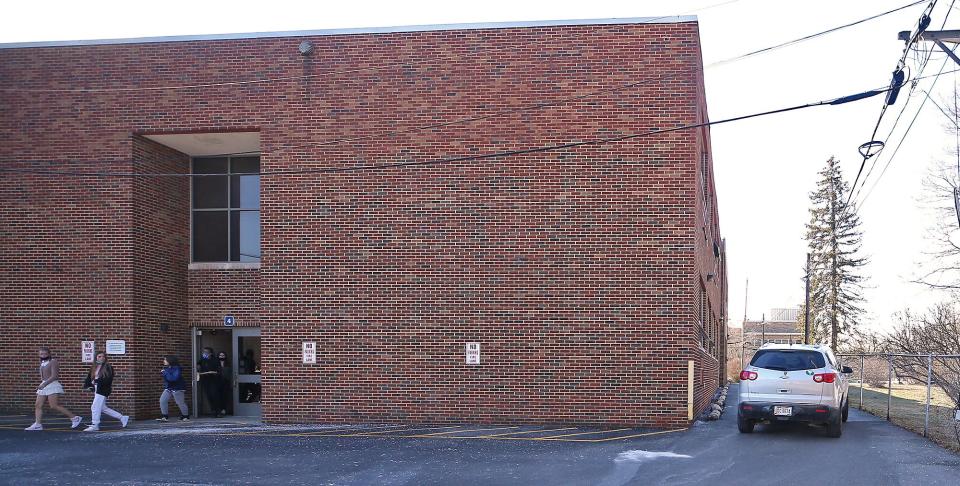
Renovating high school could be an option if costs soar too high
Superintendent Joe Clark said one option the district could look at if costs wind up being considerably higher than anticipated would be to focus on constructing the new kindergarten through fourth-grade building and the new high school, and renovate the current high school to accommodate the district's fifth through eighth grade students. He added that 80% of the residents within the school district did not have children in the Nordonia Hills schools.
MGM money: Nordonia schools get $15 million from tax appeal, but future challenges could be thwarted
Leopold said population projections, calculated before the pandemic, showed estimates of the school district's student numbers either staying about the same or even declining slightly from the current student population of about 3,500.
Clark said that the school board would need to decide on a plan and the details of a potential bond issue by August in order to place the issue on the November ballot.
Decisions on what to do with the old buildings and land "will be a discussion for another time," Clark said.
Leopold said the steering committee was in full agreement on one main point.
"Not doing anything was not an option," he said.
Reporter April Helms can be reached at ahelms@thebeaconjournal.com
This article originally appeared on Akron Beacon Journal: Nordonia Hills district seeks to replace its six school buildings

